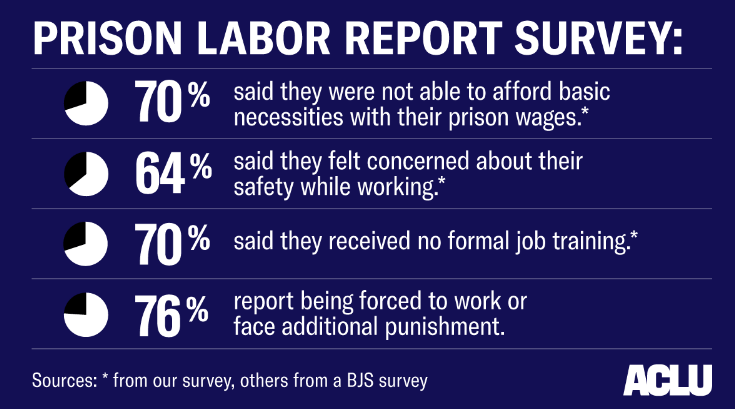A Labor Day Reminder - The Exploitation of Prison Labor
Prison Labor largely receives none of the protections celebrated by the Labor Day Holiday

After enjoying a long weekend sending summer off with an outdoor cookout with friends, a pickup basketball game in the backyard, or a quick road trip out of town thanks to the American worker, we'd be remiss if we didn't remind you that a substantial number of American workers are afforded little to none of the protections we celebrate on Labor Day.
From the moment they enter the prison gates, incarcerated people lose the right to refuse to work. This is because the 13th Amendment to the U.S. Constitution, which protects against slavery and involuntary servitude, explicitly excludes from its reach those held in confinement due to a criminal conviction. The roots of modern prison labor can be found in the ratification of this exception clause at the end of the Civil War, which disproportionately encouraged the criminalization and effective re-enslavement of Black people during the Jim Crow era, with impacts that persist to this day.
Today, more than 76 percent of incarcerated workers surveyed by the Bureau of Justice Statistics say that they are required to work or face additional punishment such as solitary confinement, denial of opportunities to reduce their sentence, and loss of family visitation. They have no right to choose what type of work they do and are subject to arbitrary, discriminatory, and punitive decisions by the prison administrators who select their work assignments.
U.S. law also explicitly excludes incarcerated workers from the most universally recognized workplace protections. Incarcerated workers are not covered by minimum wage laws or overtime protection, are not afforded the right to unionize, and are denied workplace safety guarantees.
At the same time, incarcerated workers produce real value for prison systems and state governments, the system’s primary beneficiaries. Nationally, incarcerated workers produce more than $2 billion per year in goods and more than $9 billion per year in services for the maintenance of the prisons.
As you see widely publicized news about unionization among workers in companies from Starbucks to Amazon, take a moment to look into any Prison Labor reform efforts you can support.










